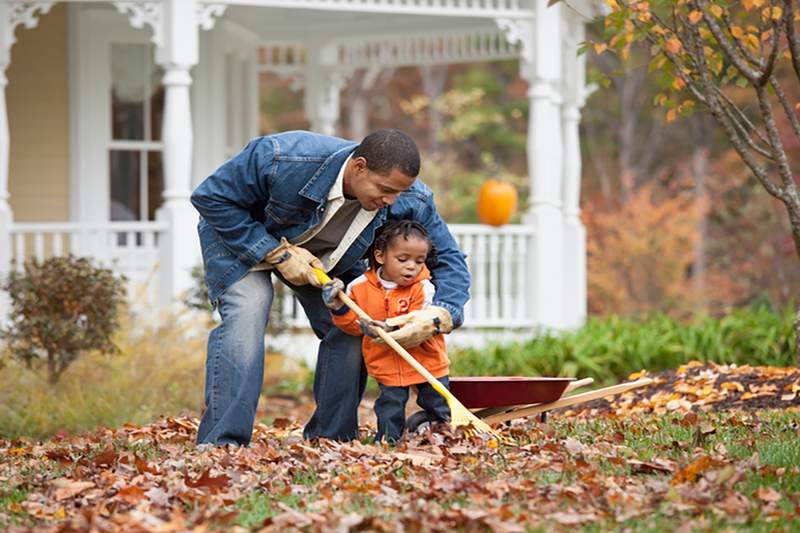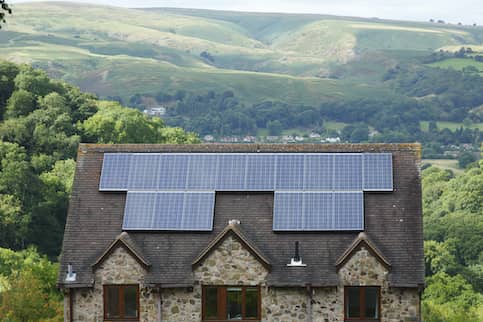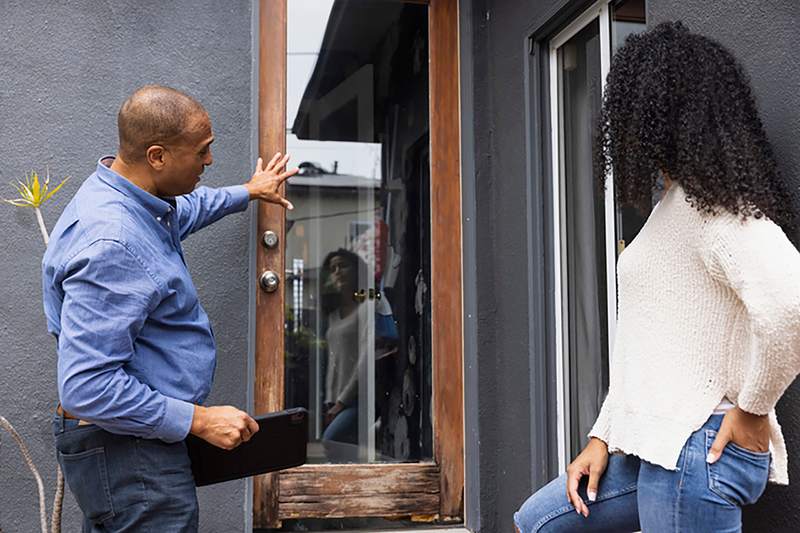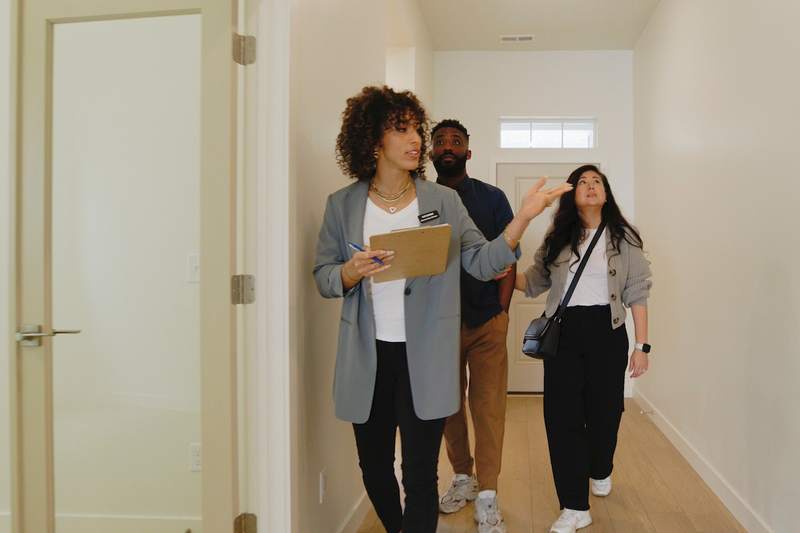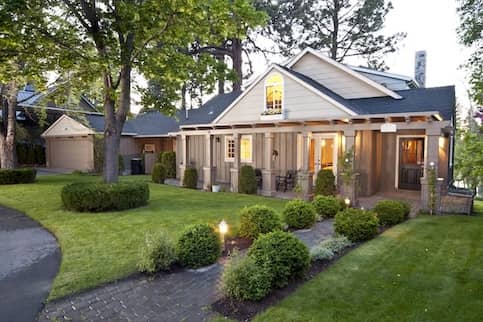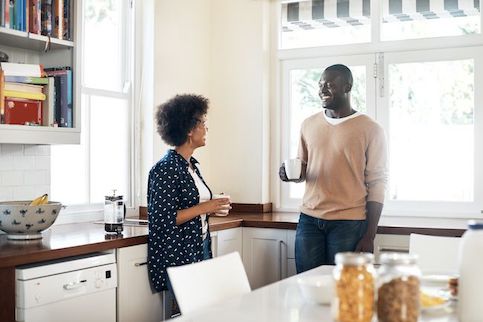Saving up for a down payment is a key step to buying a home. While it’s not something that happens overnight, with the right strategy, you can put yourself in a strong position to become a homeowner and enjoy the stability that comes with it. Here’s how to save for a down payment on a house.
What’s A Good Down Payment On A House?
The more money you put down on a house, the lower your mortgage payments will be. Also, the less money a mortgage lender loans out, the less risk it takes on. So a larger down payment could result in a more favorable interest rate on your mortgage.
If you want to avoid the expense of private mortgage insurance, you’ll need a 20% down payment on a conventional home loan. But that doesn’t mean you’ll have to put that much down if you can’t swing it.
Down Payment By Loan Type
Loan Type | Minimum Down Payment | Mortgage Insurance |
|---|---|---|
| Conventional loan | 3% | Private mortgage insurance (PMI) |
3.5% | Mortgage insurance premiums (MIP) | |
0% | None | |
0% | None |
You may be able to put down a lot less, or even nothing, depending on the type of mortgage you get. Here’s a quick snapshot of different loan programs and their down payment requirements.
What’s Your Goal?
Buy A Home
Discover mortgage options that fit your unique financial needs.

Refinance
Refinance your mortgage to have more money for what matters.
Tap Into Equity
Use your home’s equity and unlock cash to achieve your goals.
How To Save For A Down Payment On A House
Now that you have a sense of what down payment you might need to put down on a home, you may be wondering: How can I save for a house? Here are some good strategies to use.
1. Set A Goal
It’s hard to save for a down payment on a house when you don’t know how much money you’re aiming for. Look at listings in your preferred area to see what homes cost. Then, figure out the minimum down payment requirement based on the type of mortgage you’re looking to get. From there, you can come up with a savings target.
Let’s say you’re hoping to buy a $250,000 house and put 20% down to avoid the added cost of PMI. If you have nothing saved already, you’ll need to come up with $50,000.
If you’re able to save $2,000 per month based on your current income and expenses, it means you’re looking at 25 months, or just over two years, to hit your down payment goal (though you may be able to accelerate that timeline).
Don’t Forget Closing Costs
When setting your savings goal, don’t forget to factor in closing costs, which can be 3% – 6% of your home’s purchase price. You’ll need to add that to your total number unless you plan to roll your closing costs into your mortgage. Use our mortgage calculator if you aren’t sure how much you’ll need for closing costs and a down payment on your new home.
Ready To Become A Homeowner?
Get matched with a lender that can help you find the right mortgage.
2. Create A Budget
When you’re saving for a big goal, it’s important to stick to a budget. Make a list of all of your household expenses and look at past bank and credit card statements to see what they typically amount to. Then, compare your total spending to your take-home pay to see how much you can reasonably save each month.
From there, make sure to actually stick to your budget by checking on it regularly. You may want to use a budgeting app to make the process easier.
3. Boost Your Income
Even with a budget in place, you may find that you’re not saving for a down payment on a house as quickly as you’d like to. If that’s the case, find ways to boost your income. Some options for that include:
- Working overtime, if your job allows for it, or picking up extra shifts
- Getting a part-time job on top of your main one
- Joining the gig economy to earn extra money in a flexible manner
Though it might take some creativity to find the right source of extra income for you, the effort will be worth it.
4. Cut Unnecessary Spending
In addition to increasing your income, cutting out extra spending could give your down payment savings a boost. While cutting unnecessary expenses isn’t particularly fun, remember that you’re not doing it forever. Plus, you may find that certain expenses are easier to cut than others, such as:
- A streaming service you rarely use
- A gym you hardly go to
- Weekly restaurant meals, which you can substitute with home-cooked ones or potlucks with friends
Over time, a bunch of small spending cuts could help you make great progress in saving for a down payment on a house.
5. Automate Your Savings
If setting aside down payment money is just one more chore on your plate, take your mind off of it by setting up automated transfers. Through your bank, you can automate a regularly scheduled withdrawal from your checking to your savings account so that money lands there before you get a chance to spend it.
It’s a great way to stay on track when you’re working toward a major financial goal like buying a house.
6. Ask For Help
There are people in your life who may be happy to help you save for a down payment on a house, so don’t be afraid to ask.
Gifts from friends or family can be put toward a down payment if your mortgage lender allows it. And while you may find it tacky to ask the people you know for money, if you’re celebrating a big occasion like your wedding, there’s absolutely nothing wrong with making it clear that you’d prefer cash toward a home instead of glass bowls and decorative art.
7. Research First-Time Home Buyer Programs
If you’re saving up for your first home, see what first-time home buyer programs you may be eligible for. Some of these programs offer down payment assistance and can get you into a house sooner.
Both Fannie Mae and Freddie Mac have down payment assistance programs. You can also contact your state housing finance agency to see what first-time home buyer programs are available.
8. Avoid Emptying Your Savings Completely
If you’re trying to save for a down payment on a house, you may be tempted to raid your savings completely. Don’t do that.
First, you need an emergency fund as a homeowner in case things go wrong, like your roof starts to leak or your heat stops working. Secondly, you might need savings to purchase furniture for your new home or pay for a moving service.
Also, it isn’t recommended to take money out of your retirement savings for a home purchase.
IRAs do allow you to take a limited withdrawal without a penalty to buy a first-time home. But since that money is supposed to be reserved for retirement, that’s not a good idea. And if you take money out of a 401(k) before turning 59 1/2, you risk losing 10% to an early withdrawal penalty. You’re better off waiting a few extra months to buy a house than leaving yourself with no savings or touching money that’s meant to fund your retirement.
Take The First Step To Buying A Home
Find a lender that will work with your unique financial situation.
FAQ
If you’re wondering how to save for a house, here are some common questions that may come to mind.
The Bottom Line About Saving For A Down Payment
Saving for a down payment on a house will take some time, so it’s important not to get discouraged or distracted along the way. It can be tempting, for example, to put your down payment savings on pause for a month to go on vacation, but that’ll mean having to wait that much longer to buy a home of your own.
As you’re saving for a down payment on a house, remember to celebrate different milestones along the way. If you’re trying to save $30,000, for example, cook your favorite meal every time you sock away another $1,000. And keep reminding yourself that as challenging as saving for a down payment can be, in the end, it’ll all be worth it.

Maurie Backman
Maurie Backman has more than a decade of experience covering personal finance topics that include mortgages, loans, retirement, Social Security, and investing. Prior to becoming a full-time writer, she worked in the financial industry as well as in product design and marketing. Maurie holds a bachelor's degree from Binghamton University, where she studied creative writing and finance. She was happy to combine her two areas of study into a career that allows her to educate consumers on a host of financial topics.




